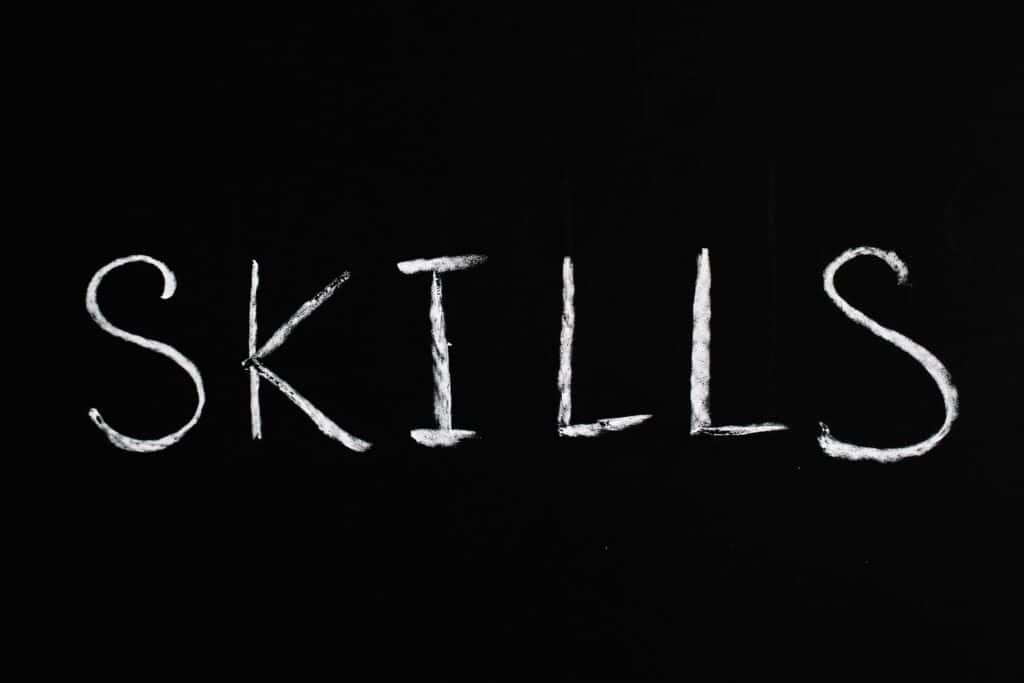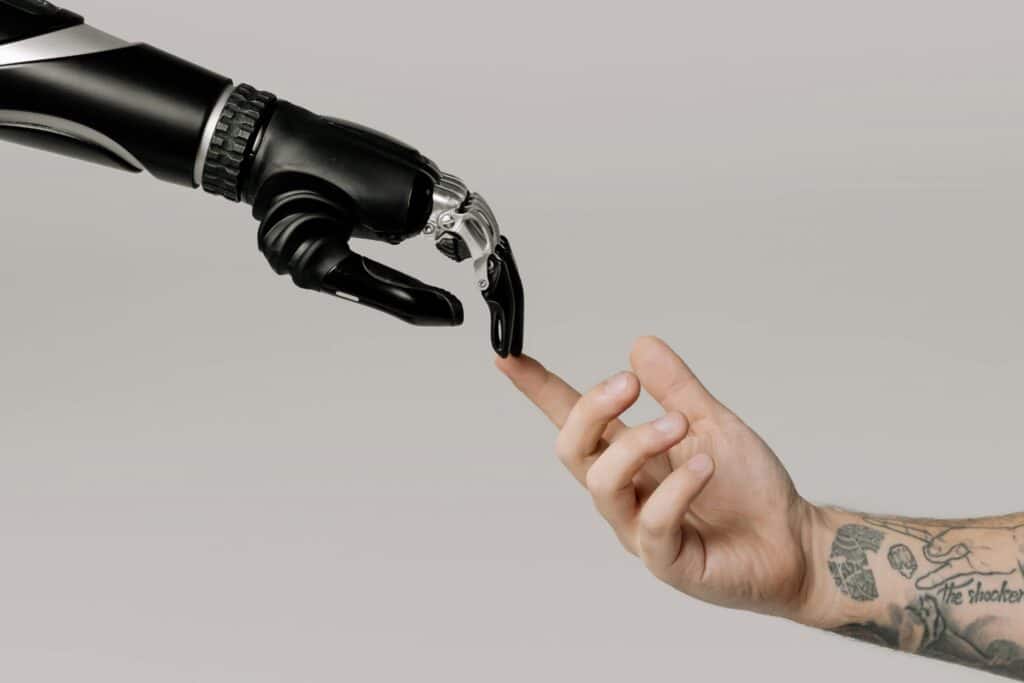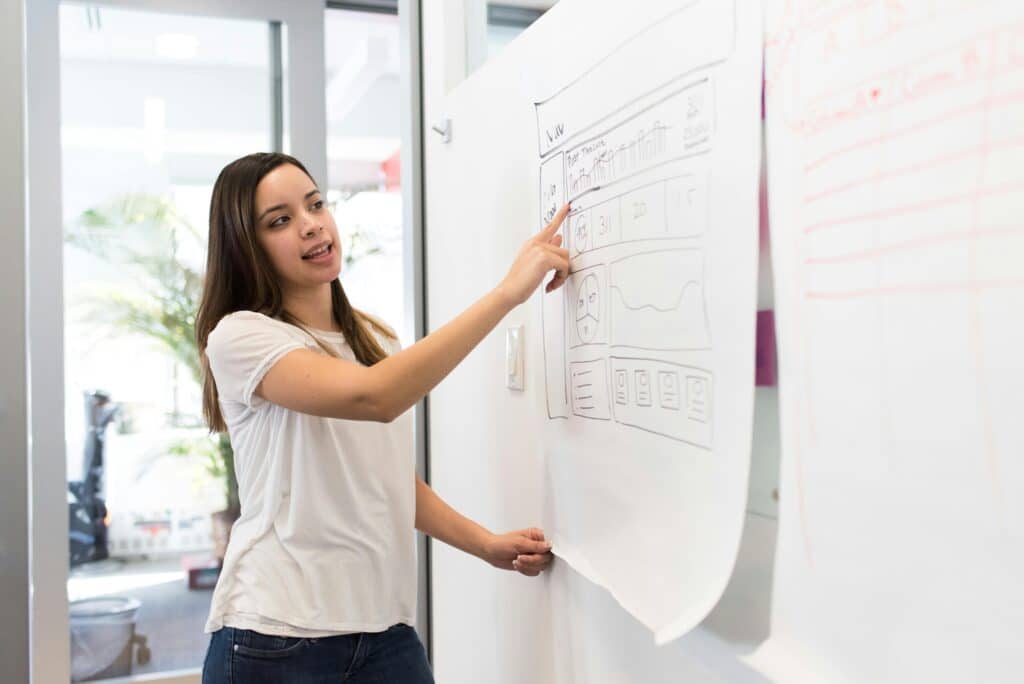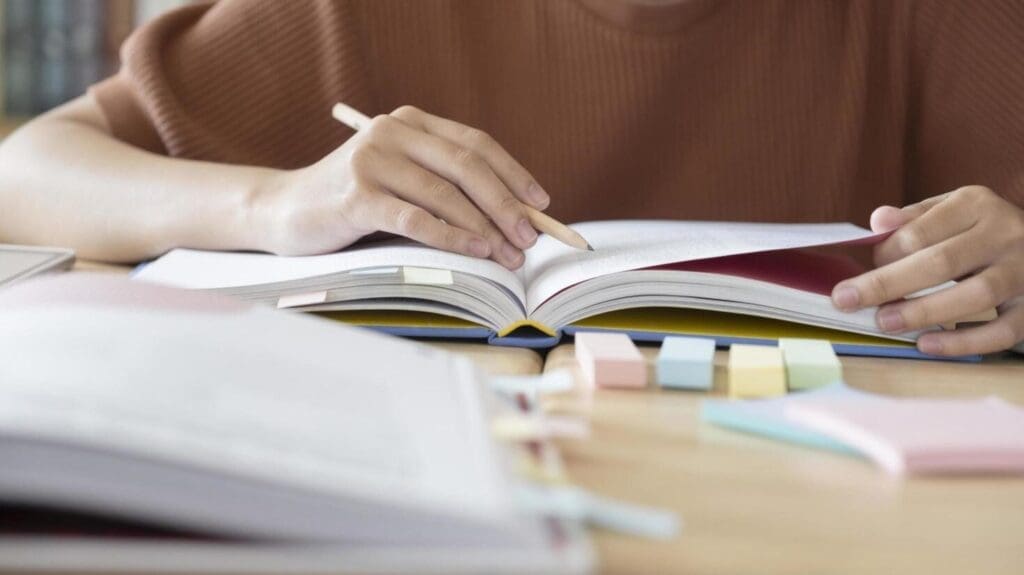Schools Are Teaching Yesterday’s Skills. Here’s Tomorrow’s

Today’s schools are teaching kids to memorize facts while the world demands problem-solving, creativity, and emotional intelligence. This disconnect leaves students unprepared for careers that require navigating AI tools, building relationships, and adapting to constant change.
Who this is for: Parents, educators, and anyone concerned about preparing kids for a rapidly evolving world where traditional academic skills aren’t enough.
The education system was built for a different era—one where knowing information gave you an edge. Now that information is everywhere, success depends on what you do with it. We’ll explore why traditional education systems are failing students by clinging to outdated methods, examine the critical skills missing from current curricula that students actually need, and look at real-world models of educational innovation that are already preparing kids for tomorrow’s challenges.
The gap between what schools teach and what the world needs is growing faster than curriculum committees can keep up. While schools debate incremental changes, students are living in a world where AI handles routine tasks and human skills like judgment, creativity, and collaboration become the new currency of success.
Why Traditional Education Systems Are Failing Students
The acceleration gap between AI development and curriculum updates

The rapid evolution of artificial intelligence has created an unprecedented disconnect between technological advancement and educational adaptation. While AI tools like ChatGPT can interpret, visualize, and summarize complex information instantly, educational institutions continue to rely on outdated models designed for a pre-digital era. This acceleration gap means that knowledge transmitted via traditional lectures frequently lags behind rapid advancements in technology, industry trends, and professional requirements.
Students increasingly question the value of attending lectures when AI can provide personalized, real-time explanations tailored to their readiness level and needs. The traditional one-directional knowledge pipeline model fails to keep pace with technological capabilities that students can access outside the classroom. Consequently, many graduates enter the job market equipped with “perishable” skills that are ill-matched to employer needs and demands.
| Traditional Education Timeline | AI Development Timeline |
|---|---|
| Curriculum updates: 3-5 years | AI capability improvements: Monthly |
| Textbook revisions: 2-3 years | New AI tools: Weekly |
| Policy implementation: 1-2 years | AI integration: Real-time |
| Teacher training: 6-12 months | AI learning curve: Days |
Schools designed for knowledge scarcity in an age of information abundance
Traditional educational systems were built on the assumption that information was scarce and teachers were the primary gatekeepers of knowledge. This model made sense when access to specialized knowledge required physical libraries, expert instructors, and carefully curated resources. However, the digital age has fundamentally transformed this landscape, creating an environment where information is abundant and instantly accessible.
The lecture-based model now seems obsolete when students can access comprehensive explanations, multiple perspectives, and interactive learning materials at any time. AI tools provide highly personalized formative feedback that surpasses what traditional high-stakes assessments can offer. Students no longer need to rely solely on scheduled classroom sessions to acquire knowledge, yet educational institutions continue to operate as if information scarcity remains the primary challenge.
This mismatch creates a fundamental tension where schools attempt to control and ration information in an era when students expect unlimited access and personalized learning experiences. The traditional gatekeeping function of education has become largely irrelevant when AI can provide instant access to vast knowledge bases.
Emphasis on memorization over critical thinking and application
Perhaps the most damaging aspect of traditional education systems is their continued focus on memorization and recall rather than developing critical thinking and application skills. High-stakes assessments typically capture only a single moment in a student’s academic journey, offering retroactive insight but little actionable feedback. These assessments tend to evaluate the wrong types of skills under artificial conditions that rarely mirror real-world scenarios where collaborative problem-solving and open-resource solutions are commonplace.
AI not only highlights these shortcomings but actively undermines the value of memorization-based learning. If graduates’ primary value lies in their ability to recall specialized knowledge, they will quickly realize that AI tools can duplicate that skillset at much lower cost and with increased efficiency. The emphasis on passive consumption of information through lectures creates learners who are unprepared for a world where AI can instantly provide factual information.
Research consistently shows that passive learning leads to poorer educational outcomes compared to active learning methods. Students trained primarily in memorization lack the “durable skills” such as critical thinking, creative problem-solving, ethical reasoning, and emotional intelligence that AI cannot replicate. This skills gap leaves graduates vulnerable to being sidelined by AI rather than empowered to work alongside it effectively.
The current model fails to prepare students for authentic challenges that require them to apply specific skills to address contemporary problems faced by real organizations and communities. Without this practical application focus, students graduate without the ability to transfer classroom knowledge to real-world contexts.
Critical Skills Missing from Current Curricula
Digital fluency and navigating AI-generated content

In our technologized society, students must develop sophisticated digital and media literacy skills that extend far beyond basic computer competency. The focus has necessarily shifted from acquiring discrete facts to determining what constitutes reliable information in an era where virtually all knowable facts are accessible at our fingertips. Students need to master the critical ability to evaluate source credibility, analyze vast arrays of often conflicting information, and navigate the complex landscape of digital content.
This digital fluency encompasses understanding how to work cooperatively in digital environments while maintaining analytical reasoning skills. Students must learn to discern between authentic and manipulated content, understand algorithmic influences on information delivery, and develop strategies for cross-referencing sources across multiple platforms. The challenge becomes even more pronounced with AI-generated content, requiring students to identify when information may have been created by artificial intelligence rather than human sources.
Educational systems have recognized that information literacy has become paramount, as students need to know more than just facts—they must understand how to determine what the facts actually are. This skill set requires continuous adaptation as technology evolves, making it essential for curricula to address not just current digital tools but the underlying principles of information evaluation that will remain relevant regardless of technological changes.
Emotional intelligence and adaptability in automated workplaces
The integration of emotional intelligence skills into educational frameworks has become crucial as students prepare for increasingly automated work environments. Students must develop the capacity to work cooperatively with multilingual colleagues from diverse cultures while maintaining flexibility and persistence in rapidly changing circumstances. These interpersonal skills cannot be replicated by automation, making them invaluable assets in tomorrow’s workforce.
Cross-cultural communication skills have emerged as fundamental competencies, enabling students to reflect on their own and other cultures through authentic global experiences. This cultural competence requires students to engage in conversations that share perspectives and firsthand experiences, developing empathy and understanding that transcends geographical boundaries. The ability to collaborate effectively across cultural divides becomes essential when working in globally distributed teams that are increasingly common in modern workplaces.
Students must also cultivate initiative and self-direction capabilities, learning to hold themselves accountable for their productivity and progress. This includes developing resilience and adaptability skills that allow them to navigate uncertainty and change—qualities that become increasingly important as automation transforms traditional job roles and creates new forms of work that require human creativity and emotional intelligence.
Entrepreneurship and innovation capabilities
Modern curricula must emphasize creativity, critical thinking, and innovation skills that enable students to become problem-solvers and entrepreneurs. The educational focus has moved away from the knowledge level of learning toward higher-order thinking skills that emphasize application, creation, and innovation. Students need to develop the ability to apply knowledge in novel situations and create innovative solutions to real-world problems.
Project and problem-based learning approaches offer strategic methodologies that motivate learners as they work cooperatively to solve authentic issues. These experiences require students to demonstrate initiative, direct their own learning processes, and remain accountable for outcomes while being responsible stewards of resources. Such approaches prepare students not just to find employment but to create opportunities and drive economic growth through entrepreneurial thinking.
The integration of these innovation capabilities requires students to develop leadership skills and the ability to communicate clearly across diverse audiences. They must learn to analyze complex situations, synthesize information from multiple sources, and present compelling solutions that address real-world challenges. This entrepreneurial mindset includes understanding how to assess risk, iterate on ideas, and persist through failure—all essential components of successful innovation in the modern economy.
These capabilities extend beyond traditional academic subjects, requiring integration across English, science, world languages, mathematics, and other disciplines to ensure students develop holistic problem-solving approaches that mirror the interdisciplinary nature of real-world challenges.
Building Agile and Dynamic Educational Frameworks
Project-based learning that connects multiple disciplines
Now that we have identified the skills gap in traditional education, adaptive learning frameworks offer a solution through interdisciplinary project-based approaches. These frameworks enable students to tackle real-world challenges that naturally integrate multiple subject areas, moving beyond isolated academic silos. By constructing design frameworks that emphasize practical application, educators can create learning experiences where students simultaneously develop technical skills, critical thinking, and collaborative abilities through meaningful projects.
Iterative curricula that evolve with societal needs
With this foundation established, adaptive learning systems must incorporate iterative curriculum design that responds to changing societal demands. The pedagogical approach for adaptive learning in higher education emphasizes continuous refinement of educational content based on emerging industry needs and technological advances. This dynamic framework ensures that educational institutions remain relevant and effective in preparing students for an evolving workforce landscape.
Real-World Models of Educational Innovation
High Tech High’s project-based learning approach

High Tech High represents a revolutionary departure from traditional classroom models, embodying the principles of real-world, project-based education that prepares students for tomorrow’s challenges. Unlike conventional schools that rely on textbook-driven curricula and standardized testing, High Tech High creates learning environments where students engage in authentic, hands-on projects that mirror professional workplace experiences.
The school’s approach transforms traditional teacher-student dynamics by positioning educators as coaches and facilitators rather than information deliverers. Students work in small teams on practical projects that integrate multiple disciplines, fostering collaboration skills essential for modern careers. This model ensures that education is rooted in real-world applications, with students tackling genuine problems that require critical thinking, creativity, and innovative solutions.
What sets High Tech High apart is its commitment to making learning relevant and engaging. Students don’t simply memorize facts for tests; instead, they develop portfolios of meaningful work that demonstrates their competencies across various subjects. This approach naturally cultivates the kind of agile thinking and problem-solving abilities that traditional education systems often fail to develop.
Finland’s emphasis on student well-being and teacher autonomy
Finland’s education system stands as perhaps the most compelling example of how prioritizing student well-being over academic pressure can yield extraordinary results. Consistently ranking among the world’s highest achievers in mathematics, reading, and science, Finland has achieved these impressive outcomes while spending 30% less per student than the United States—powerful testimony to the effectiveness of their alternative model.
The Finnish approach fundamentally rejects the evaluation-centered systems that dominate global education. Children don’t begin formal education until age seven, and they experience virtually no homework or exams until well into their teens. For their first six years of schooling, students aren’t tested at all, with the only mandatory assessment occurring at age 16. This absence of competition and academic pressure allows children to flourish, focusing on learning how to learn rather than how to pass exams.
Perhaps most remarkably, Finland teaches children of all abilities in the same classroom, enabling less academically gifted students to learn from brighter peers. This inclusive approach has resulted in the smallest achievement gap between highest and lowest performers worldwide. The system also maintains small science class sizes limited to sixteen students, ensuring all pupils can participate in hands-on experiments.
Teacher autonomy plays a crucial role in Finland’s success. Educators are treated as highly skilled professionals who possess the expertise to make instructional decisions without excessive oversight or standardized curriculum mandates. This trust in professional judgment creates an environment where teachers can adapt their methods to meet individual student needs effectively.
Screen-light, challenge-based learning ecosystems

With growing concerns about technology’s impact on learning and development, innovative educational models are emerging that deliberately limit screen time while maximizing hands-on, challenge-based experiences. These ecosystems recognize that while technology has its place in modern education, over-reliance on digital devices can impede the development of critical thinking, interpersonal skills, and physical coordination that students need for future success.
Screen-light learning environments prioritize face-to-face interaction, collaborative problem-solving, and tactile experiences that engage multiple senses. Students work on complex, real-world challenges that require them to research, experiment, build, and iterate—all while developing essential communication and teamwork skills through direct human interaction.
These learning ecosystems often incorporate elements from various successful models worldwide, such as Finland’s emphasis on reduced academic pressure and High Tech High’s project-based methodology, while maintaining a deliberate focus on balancing digital literacy with analog skills. Students learn to use technology as a tool when appropriate, rather than as a default medium for all learning activities.
The challenge-based approach ensures that students develop resilience, creative thinking, and adaptability—skills that automated systems cannot easily replicate. By working through complex problems that don’t have predetermined solutions, students build the kind of innovative mindset that will serve them well in an rapidly evolving job market where human creativity and critical thinking remain irreplaceable.
The ground has shifted beneath our educational system while we continue teaching yesterday’s skills to students who will inherit tomorrow’s world. Traditional curricula, anchored in knowledge scarcity and rote memorization, fail to address the acceleration gap between AI advancement and classroom adaptation. As specialized information becomes instantly accessible, the premium shifts from knowledge possession to knowledge application—from memorization to discernment, from information recall to creative synthesis. Our test-driven system struggles to develop the critical thinking, emotional intelligence, and adaptability that define success in an AI-augmented world.
The time for radical transformation is now. We cannot wait for slow-moving institutional reform while our children’s futures hang in the balance. Families, mentors, and communities possess more agency than we realize—those 4,000+ waking hours outside school represent untapped development time that can be shaped intentionally. Whether through parallel educational tracks, agile learning frameworks, or simply asking better questions at home, we must embrace our power to prepare young minds for complexity and uncertainty. As the reference wisely notes, it would be better to try and fail than to remain apathetic and resigned to a system we know isn’t serving our children’s futures.
Works Cited
“Digital Education Evolution: Investigating Finland’s Past and Future Directions.” Constantin Sârb. Haaga-Helia University of Applied Sciences (Bachelor’s thesis), 2024. Discusses how Finland balances digital tools and traditional methods, and rising concerns and policy around AI. https://www.theseus.fi/bitstream/handle/10024/869346/Sarb_Constantin.pdf;jsessionid=B598A4333CE3B05DE49DF2771931B490?sequence=6
Kivinen, Kari. “In Finland, We Make Each Schoolchild a Scientist.” Issues, 2023. Describes Finland’s multiliteracy curriculum (fact-checking, critical thinking across ages) and its results in media literacy. Issues in Science and Technology
“For Teachers: AI Guide for Teachers / Digital Information Literacy.” Finnish National Agency for Education & Faktabaari. 2024. A guide covering AI foundations, ethical use, challenges & teacher skill gaps. Opetushallitus
Mertala, P. “Finnish 5th and 6th Grade Students’ Pre-instructional Conceptions of Artificial Intelligence (AI).” ScienceDirect, 2022. Surveys students’ understanding of AI in Finland. ScienceDirect
“Multilevel Analysis of the Educational Use of Technology in Finland.” Kaarakainen, M. T., et al., Journal of Computer Assisted Learning, 2021. Shows how Finnish teachers used digital devices at least weekly pre-pandemic. Wiley Online Library
Laupichler, M. C., et al. “Artificial Intelligence Literacy in Higher and Adult Education.” ScienceDirect, 2022. Looks at growth in AI literacy in post-secondary & adult education. ScienceDirect


